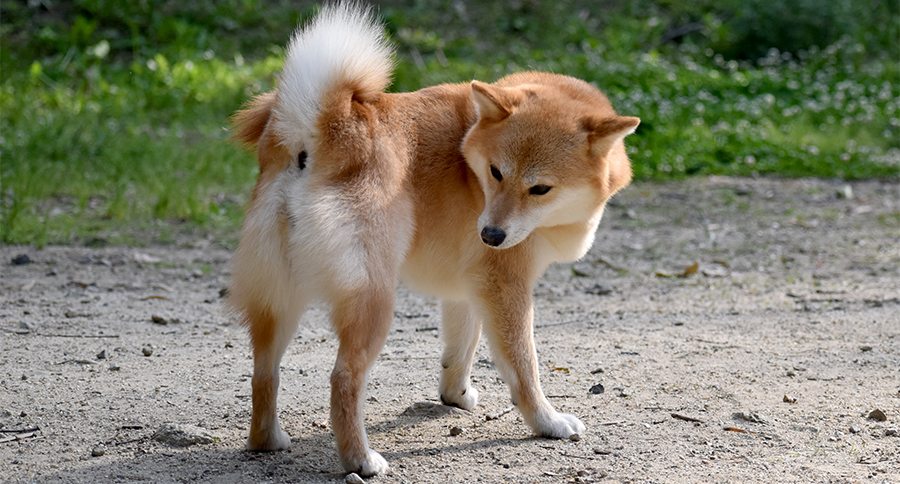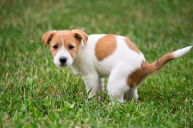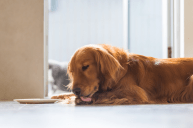Could enough fiber a day keep the doctor away?
A dog's anal glands are two pea-to-grape-sized sacs on either side of the dog's anus that fill with smelly liquid over time. Many animals including cats have them. Some animals use anal glands for marking while others, like skunks, rely on the malodorous expression to ward off predators.
Your dog's body is designed to naturally express those anal glands and keep them healthy, but modern-day dog diets can change that. The result can be painful, full anal glands that will need some care. It's a smelly job, but it's an important part of caring for your dog.
When Anal Glands Become a Problem
Dogs on a healthy diet with normal, formed stool naturally express their anal glands slightly each time they defecate, preventing fluid build-up in the anal sphincter. However, many domestic dog diets result in significantly softer stool rather than hard stool, thus allowing the anal sacs to fill.
When the anal glands get too full, it becomes uncomfortable for the dog—and often rather gross and smelly for the owners. Sometimes the stench from the dog's rear end is enough to cue pet owners that it's time to get those anal glands expressed at the vet.
Symptoms of Full or Infected Anal Glands
Symptoms of full or infected anal glands include:
- Foul-smelling dog poop or rear end
- Leaky fluid from the back end
- Soft stool
- Excessive butt licking or chewing
- Dog scooting
- Trouble defecating
- Bloody anus
- Rectal swelling
Treatment
While the need for manual anal gland expression is relatively normal for domesticated dogs, dogs needing frequent manual expression more than once a month might have an infection or impacted anal glands. Veterinarians might prescribe antibiotics, probiotics, or a diet change for anal gland problems. Warm compresses can be applied to anal gland abscesses until they drain naturally, or a veterinarian can medically drain them.
As a worst case scenario, dogs with severe anal gland infections can have the anal sacs surgically removed. However, this can cause disruption to your dog's comfort, ease, and ability to defecate, so it is not often recommended.
Prevention
Annual to semi-annual veterinary check-ups can help you ensure that your dog and his anal glands stay in tip-top shape. Veterinarians will check the anal glands as part of their routine exam. This will allow them to see if the glands need expressing or any treatment.
Additionally, the veterinarian can determine if the dog's stool is normal and the diet healthy to prevent anal gland infection and lessen the need for manual anal gland expression. A high fiber diet, digestive enzymes, probiotics, and fatty acids are especially important to keep your dog's bowel movements up-to-par. A good diet means firm stool, and in turn, healthy anal glands!
Exercise also increases defecation, so making sure your pet gets plenty of playtime can actually help keep those anal glands from overflowing!
Unlike dogs, cats rarely need their anal glands expressed, but they can experience the same trouble and symptoms as dogs and require the same treatment.
Dog owners should not attempt to expression themselves nor let non-medical individuals, including dog grooming professionals, express the glands. The glands can rupture or become inflamed from over-expression, so they shouldn't be expressed manually unless a veterinarian deems it necessary.
Has your dog ever had trouble with his or her anal glands? Share your pet's experience on our Wide Open Pets Facebook Page.
READ MORE: Why Do Dogs Eat Poop? When Doody Calls, Experts Weigh In




